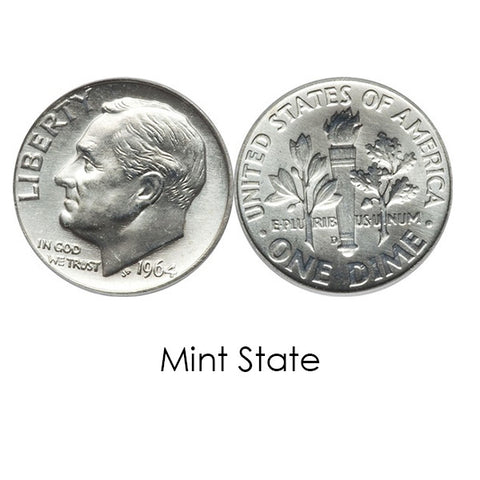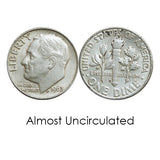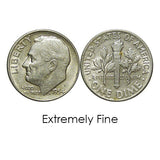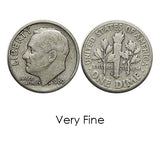Roosevelt Dime 1990 - 1999
Soon after the death of President Franklin D. Roosevelt in 1945, legislation was introduced by Virginia Congressman Ralph H. Daughton that called for the replacement of the Mercury dime with one bearing Roosevelt's image. The dime was chosen to honor Roosevelt partly due to his efforts in the founding of the National Foundation for Infantile Paralysis (later renamed the March of Dimes), which originally raised money for polio research and to aid victims of the disease and their families. The public had been urged to send in a dime to the Foundation, and by Roosevelt's death, the Foundation was already popularly known as the "March of Dimes." Due to the limited amount of time available to design the new coin, the Roosevelt dime was the first regular-issue U.S. coin designed by a Mint employee in more than 40 years.
With the passage of the Coinage Act of 1965, the composition of the dime changed from 90 percent silver and 10 percent copper to a clad "sandwich" of copper between two layers of an alloy of 91.67 percent copper and 8.33 percent nickel. This composition was selected because it gave similar mass (now 2.27 grams instead of 2.5 grams) and electrical properties (important in vending machines) and most importantly, because it contained no precious metal.
The coin pictured is just an example of the product, and is not the coin you will receive.








